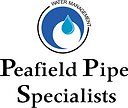Pipelines are the lifelines of modern society, transporting essential resources like oil, gas, and water over vast distances. Ensuring the safety and integrity of these pipelines is paramount, as any failure can lead to catastrophic consequences for both the environment and human lives. Among the various methodologies employed to ensure pipeline safety, pressure testing stands out as a critical technique. In this article, we delve into the world of pressure testing, exploring its techniques, challenges, advancements, and its role in preventing disasters.
Types of Pressure Testing Techniques
Hydrostatic Testing: One of the most traditional methods of pressure testing, hydrostatic testing involves filling the pipeline with water and raising the pressure to levels significantly higher than its operational pressure. This test not only identifies weaknesses in the pipeline’s structure but also validates its capacity to withstand extreme conditions. Hydrostatic testing’s advantage lies in its ability to simulate realistic pressure scenarios, although it can be time-consuming and requires proper water disposal.
Pneumatic Testing: Pneumatic testing, on the other hand, uses air or nitrogen to pressurize the pipeline. This technique is faster than hydrostatic testing, making it useful in situations where time is a constraint. However, it requires careful control of air quality to prevent contamination and special considerations due to compressibility effects.
Preparing for Pressure Testing
Before commencing pressure testing, thorough preparation is essential.
Pipeline Inspection and Cleaning: A clean pipeline is crucial for accurate testing results. Any debris or contaminants can skew the test outcomes. Therefore, pipelines undergo meticulous cleaning and inspection processes to ensure that the test reflects the pipeline’s true condition.
Safety Measures: The safety of personnel and the surrounding environment is paramount during pressure testing. Protective equipment, hazard assessments, and proper ventilation must be in place to prevent accidents. Mitigating potential hazards ensures a safe testing environment.
Conducting Effective Pressure Tests
Executing pressure tests effectively involves careful consideration of several factors.
Test Parameters and Criteria: Determining the appropriate test pressure levels and allowable deviations is critical. This entails understanding the pipeline’s design specifications, intended operating conditions, and regulatory requirements. Complying with industry standards ensures accurate testing.
Monitoring and Recording: Real-time pressure monitoring during the test is essential to detect any abnormal behavior. Data recording and subsequent analysis help identify deviations and anomalies. Any irregularities can be promptly addressed, reducing the risk of undetected vulnerabilities.
Challenges and Considerations
Pressure testing isn’t without its challenges.
Material and Design Factors: Different pipeline materials and designs can affect testing outcomes. Understanding how materials respond to pressure and identifying design-specific vulnerabilities is crucial to accurate testing.
Temperature Effects: Temperature variations can impact pressure test results, leading to false positives or negatives. Proper compensation mechanisms are necessary to ensure accurate assessment irrespective of temperature fluctuations.
Advanced Pressure Testing Techniques
As technology advances, so do pressure testing techniques.
Acoustic Emission Testing: Acoustic emission testing involves detecting ultrasonic signals emitted by a pipeline under stress. This technique can identify defects even before they become critical, providing an early warning system for maintenance.
In-line Inspection Technologies: Intelligent pigs and other in-line inspection tools complement pressure testing. These devices navigate through pipelines, capturing detailed data about the pipeline’s condition. Integrating this data with pressure testing results enhances accuracy and reliability.
Case Studies and Examples
Notable Pipeline Failures: History is replete with pipeline failures that resulted from inadequate pressure testing. Learning from past incidents emphasizes the importance of rigorous testing procedures. The tragic lessons from these failures underscore the necessity for comprehensive pressure testing.
Successful Safety Assurance: Many instances highlight the effectiveness of pressure testing in preventing disasters. These success stories demonstrate how early detection of vulnerabilities through thorough testing can avert potential catastrophes, safeguarding lives and the environment.
Future Trends in Pressure Testing
Integration of Technology: The future of pressure testing is closely tied to technology. Artificial intelligence, automation, and remote monitoring are anticipated to play significant roles. These advancements could streamline testing processes and enhance accuracy.
Evolving Industry Standards: Industry standards continue to evolve to meet changing demands. Collaborative efforts among industry players are likely to lead to improved safety measures. Adapting pressure testing practices to align with emerging guidelines is crucial for maintaining safety standards.
Conclusion
Pressure testing stands as a cornerstone in the mission to ensure pipeline safety. By employing techniques such as hydrostatic and pneumatic testing, carefully preparing for tests, and embracing advanced technologies, pipeline operators can minimize the risks associated with failures. As technology advances and industry standards evolve, the continuous improvement of pressure testing techniques remains essential. With a commitment to rigorous testing, the pipeline industry can mitigate potential disasters and secure the well-being of both the environment and society.
